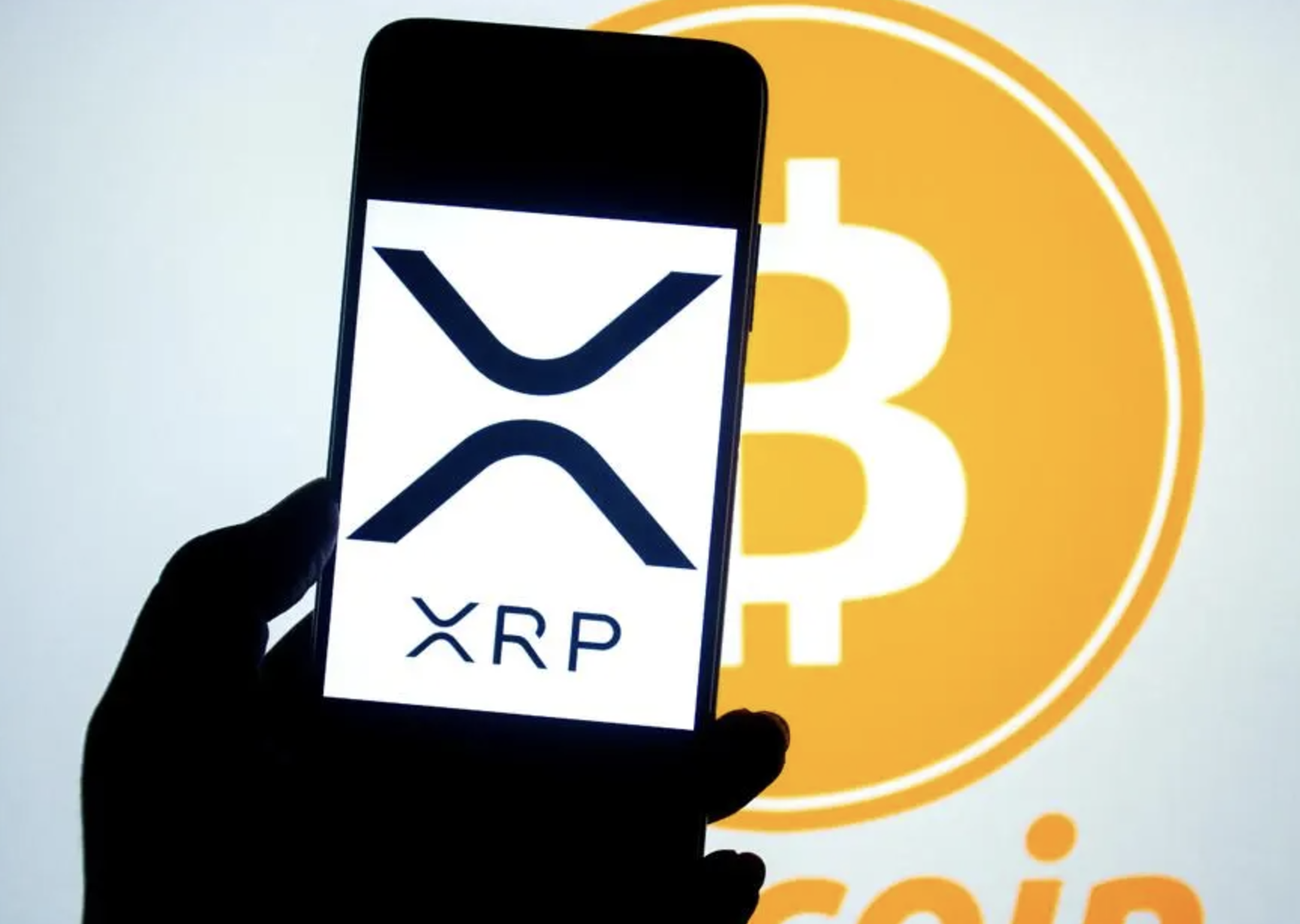Ripple (XRP) and Its Potential in the Evolving Financial Landscape
Ripple’s strategic positioning, regulatory clarity, and product innovation — such as stablecoin launches, political advocacy, and expanding adoption of XRP through financial partnerships — create significant potential for XRP’s growth, making it a key asset to consider for portfolio diversification and long-term investment strategies.
In 2024, Ripple and its native cryptocurrency XRP have delivered one of the most compelling narratives in the crypto sector. Following a decisive legal victory against the SEC, Ripple is now leveraging its strategic advantages to roll out new products, increase political influence, and position itself as a leader in the intersection between traditional finance and digital assets. This analysis dives into Ripple’s ecosystem, its recent developments, and the broader implications for our investment strategies.
Ripple’s Ecosystem: Decoding the Framework
Ripple’s infrastructure comprises three interconnected but distinct entities:
Ripple: The core technology company responsible for developing blockchain solutions aimed at modernising the global financial system.
RippleNet: The payment network that facilitates near-instant, low-fee cross-border transactions between financial institutions.
XRP: The digital currency that powers liquidity and settlements within the Ripple ecosystem.
Why This Matters: Ripple’s streamlined approach offers a more efficient alternative to traditional banking systems, which rely on a costly web of intermediaries, slow processing times, and high fees. XRP acts as the critical bridge asset for liquidity, facilitating real-time transactions without pre-funded accounts.
RippleNet has processed billions of transactions since its inception in 2012, demonstrating its scalability and efficiency. This robust infrastructure makes Ripple a formidable player in the global payments industry.
Legal Victory: A Turning Point for Ripple and XRP
Earlier this year, Ripple won a significant lawsuit against the SEC. The judge ruled that XRP sales to retail investors did not qualify as securities transactions. This decision provided much-needed regulatory clarity for Ripple and its partners, removing a substantial obstacle to XRP adoption.
Impact of the Ruling:
Strategic Freedom: Ripple can now move forward confidently with product launches and business development.
Market Sentiment: Investor confidence surged following the ruling, leading to increased demand for XRP.
Partnership Growth: With the legal ambiguity resolved, more financial institutions are likely to adopt RippleNet and XRP for their payment needs.
This legal clarity has set the stage for Ripple’s next major innovation: the launch of a stablecoin.
Stablecoin Launch: Ripple USD (RLUSD) – A New Contender
On December 4, 2024, Ripple introduced Ripple USD (RLUSD), a stablecoin pegged 1:1 to the US dollar and backed by reserves. Unlike many existing stablecoins such as Tether (USDT) and USD Coin (USDC), RLUSD is designed to be one of the most regulated stablecoins on the market.
Ripple has partnered with the New York Department of Financial Services (NYDFS), ensuring RLUSD meets strict compliance standards. This regulatory oversight gives RLUSD a competitive edge in attracting institutional investors and financial institutions wary of unregulated alternatives.
Why RLUSD Matters:
Stability and Efficiency: While XRP excels at fast, low-cost cross-border payments, RLUSD offers price stability for everyday transactions.
Regulatory Advantage: With global governments cracking down on unregulated stablecoins, RLUSD’s compliance could make it the preferred choice for banks and businesses.
Market Positioning: Ripple is now competing directly with major stablecoin issuers, positioning itself as a leader in the regulated crypto-finance space.
Political Influence: Strategic Lobbying and Crypto Advocacy
Ripple’s influence extends beyond technology into the political arena. The company has invested $75 million over the past two years in the pro-crypto political action committee Fairshake. This makes Ripple one of the largest donors in the crypto industry, supporting candidates who advocate for clear and favorable crypto regulations.
Implications of Political Advocacy:
Regulatory Clarity: By supporting pro-crypto candidates, Ripple aims to shape policies that foster innovation and adoption.
Mainstream Integration: Favourable regulations can accelerate the integration of cryptocurrencies like XRP and stablecoins like RLUSD into traditional financial systems.
Industry Leadership: Ripple’s proactive stance positions it as a thought leader and influencer in the broader financial ecosystem.
Ripple’s CEO, Brad Garlinghouse, emphasises that regulatory clarity is critical for the long-term adoption of crypto assets. This lobbying effort strengthens Ripple’s strategic positioning and enhances the likelihood of widespread adoption.
XRP ETFs: Bridging Traditional and Digital Investments
Ripple is making strides to integrate XRP into traditional investment vehicles through exchange-traded funds (ETFs). Recently, WisdomTree, managing over $100 billion in assets, filed for an XRP spot ETF with the SEC. Approval of an XRP ETF could simplify access for retail and institutional investors, replicating the success seen with Bitcoin ETFs.
Potential Impact of an XRP ETF:
Market Accessibility: Investors can gain exposure to XRP without managing digital wallets or navigating crypto exchanges.
Price Surge: Bitcoin’s price nearly doubled after its ETF approval, suggesting a similar trajectory for XRP.
Institutional Involvement: Asset managers like Bitwise, 21Shares, and Canary Capital are also pursuing XRP ETFs. If BlackRock joins the fray, approval becomes highly probable.
This development could unlock significant capital inflows and enhance XRP’s market value.
Global Financial Standards: ISO 20022 Compliance
XRP’s compliance with the ISO 20022 standard is a major strategic advantage. ISO 20022 is a universal messaging standard for cross-border payments, set to become mandatory for banks by 2025.
Why Compliance Matters:
Seamless Integration: Banks adopting ISO 20022 can integrate XRP into their payment systems without friction.
Central Bank Partnerships: XRP’s compliance makes it an attractive option for central banks modernising their payment infrastructure.
Competitive Edge: Few cryptocurrencies meet this standard, positioning XRP as a frontrunner for institutional adoption.
On-Demand Liquidity (ODL): Solving the Pre-Funding Problem
Ripple’s On-Demand Liquidity (ODL) solution addresses a fundamental inefficiency in cross-border payments. Traditionally, banks maintain large pre-funded accounts in foreign currencies, tying up billions of dollars.
How ODL Works:
Efficiency: XRP serves as a bridge currency, enabling instant settlements without pre-funding.
Cost Reduction: Eliminates the need to lock up capital in foreign currencies.
Adoption Potential: With partnerships in over 55 countries, RippleNet’s expansion could drive demand for XRP, increasing its value.
Market Scarcity and Utility-Driven Demand
XRP’s total supply is capped at 100 billion tokens, with a significant portion held in escrow by Ripple. Gradual releases from escrow and growing adoption could lead to market scarcity.
Key Factors:
Demand + Scarcity: Increased utility-driven demand could push prices higher.
Real-World Use Cases: Unlike speculative cryptocurrencies, XRP’s value is supported by real-world applications in banking, remittances, and payments.
Strategic Insights and Investment Recommendations
1. Diversify Portfolio
Diversification remains a cornerstone of risk management and growth in our investment strategy. Given XRP’s recent legal clarity and Ripple’s robust ecosystem, it is prudent to allocate a portion of our crypto investments to XRP. While XRP offers substantial growth potential due to its increasing adoption in the financial sector, it still carries inherent risks associated with the volatile nature of cryptocurrencies and potential regulatory shifts. A balanced allocation ensures that we can capitalise on XRP’s upside potential while mitigating exposure to downside risks. Consider pairing XRP investments with other established digital assets like Bitcoin (BTC) and Ethereum (ETH) to create a diversified crypto portfolio. Additionally, maintaining a mix of stable assets, such as regulated stablecoins (e.g., Ripple USD – RLUSD), can provide stability and liquidity during market fluctuations.
2. Monitor Regulatory Developments
Regulatory clarity is a critical factor that can influence XRP’s market performance. Ripple’s proactive engagement with regulators positions it well, but the broader landscape of crypto regulations is constantly evolving. Focus on tracking developments related to stablecoin regulations and XRP ETF approvals. An approval of an XRP spot ETF, similar to the Bitcoin ETF success, could unlock significant capital inflows from retail and institutional investors, driving demand and price appreciation. Key areas to monitor include:
US SEC Decisions: Updates on ETF applications from firms like WisdomTree, Bitwise, and BlackRock.
International Regulatory Changes: Policies from jurisdictions such as the European Union (MiCA framework), Japan’s FSA, and Hong Kong’s SFC could impact XRP’s adoption and market dynamics.
Stablecoin Compliance: Watch Ripple USD’s (RLUSD) rollout and its acceptance among financial institutions. Regulatory endorsements or challenges in major markets like the US, EU, and Asia will be critical indicators.
Proactively adjusting our investment strategy based on these regulatory milestones can help us stay ahead of market movements and mitigate compliance-related risks.
3. Watch Adoption Metrics
The growth and real-world utility of XRP are directly tied to Ripple’s expanding network of partnerships and the adoption of On-Demand Liquidity (ODL) solutions. To gauge XRP’s potential, closely monitor the following adoption metrics:
Partnership Expansion: Track Ripple’s partnerships with banks, payment providers, and remittance companies across key regions such as Asia-Pacific, Europe, Africa, and Latin America. High-profile collaborations with central banks and large financial institutions signal strong validation of Ripple’s technology.
ODL Utilisation Rates: Assess the volume and frequency of transactions processed through Ripple’s ODL service. Increased usage indicates growing trust and reliance on XRP for cross-border payments.
Network Activity: Analyse the number of transactions on RippleNet and the amount of XRP used for settlements. Metrics such as transaction speed, cost-efficiency, and liquidity levels will offer insights into XRP’s scalability and competitiveness.
ISO 20022 Compliance Adoption: As the 2025 deadline for mandatory ISO 20022 compliance approaches, track which banks and financial institutions are integrating XRP into their payment systems. This compliance standard is a significant opportunity for XRP to gain a foothold in the global financial infrastructure.
A detailed understanding of these metrics will help us identify growth trends and make informed investment decisions.
4. Engage in Political Developments
Ripple’s strategic investments in political advocacy are designed to influence regulatory frameworks and foster a pro-crypto environment. Given Ripple’s $75 million in donations to the Fairshake PAC and its ongoing engagement with policymakers, it is crucial to stay informed about the following political developments:
Crypto-Friendly Legislation: Monitor candidates and legislative proposals that support crypto innovation and regulatory clarity. Ripple’s political influence may accelerate the adoption of favorable policies.
Government Attitudes Towards Crypto: Track the stance of key regulatory bodies such as the SEC, CFTC, and NYDFS. Changes in leadership or policy direction could impact Ripple’s business operations and XRP’s market value.
Global Crypto Policy Trends: Beyond the US, pay attention to international regulatory trends in regions like the EU, UK, China, and Middle East. Countries that adopt crypto-friendly policies could provide new opportunities for Ripple’s expansion.
Industry Coalitions and Alliances: Ripple’s participation in industry coalitions and alliances advocating for regulatory clarity (e.g., the Blockchain Association) can provide strategic insights into future policy directions.
Active engagement with these political developments can enhance our strategic positioning, ensuring we are well-prepared for shifts in the regulatory landscape that could influence XRP’s long-term adoption.
Ripple’s strategic positioning, legal clarity, and innovative product development present a compelling case for XRP’s growth potential. By integrating XRP into a diversified portfolio, closely tracking regulatory and adoption trends, and staying attuned to political developments, we can maximise our exposure to this high-potential asset while managing associated risks.
These insights should serve as a foundation for both our personal investment strategies and LupoToro Group’s broader financial planning. XRP’s role in the evolving digital payments landscape is poised to expand, and a proactive, well-informed approach will ensure we capitalise on these opportunities.
This article is intended as opinion only, not for financial, investment or legal business advice.

